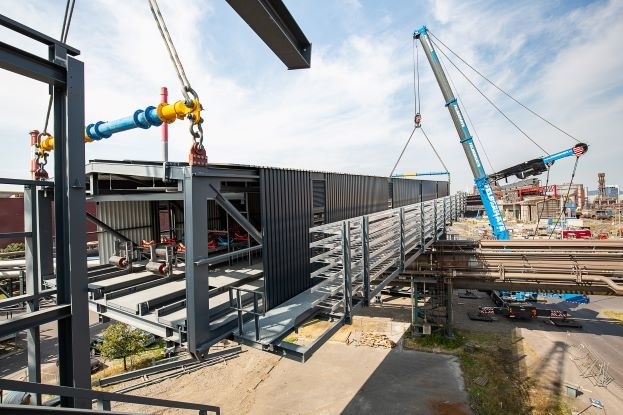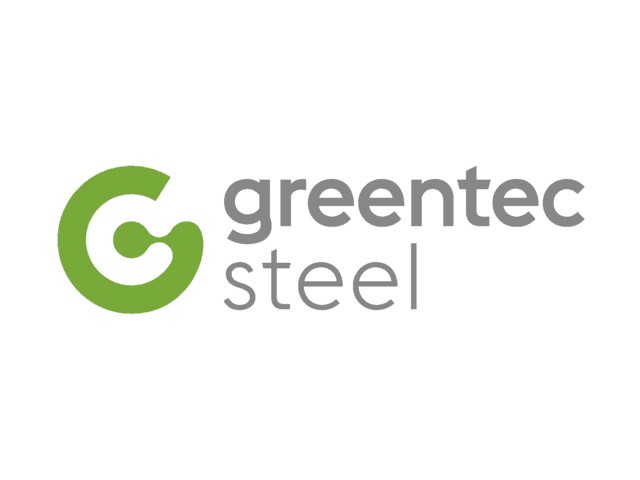Conveyor belt bridge made of greentec steel
Work began recently on the new conveyor line for the raw material supply of the steelmaking plant. "Green" steel from the greentec steel edition was used for the gray conveyor bridge.
A few steps must yet be taken before the electric arc furnace (EAF) in Linz is scheduled to begin operation in 2027. In addition to preparations for construction of the EAF, important auxiliary facilities such as the HBI conveyor line are already in the design stage.
The first four bridge parts for the conveyor line of the raw material supply were manipulated with the help of two truck cranes. Assembly and the entire installation work was carried out at a pre-assembly location. As a result, most of the work did not have to be carried out at lofty heights, but with a firm floor under foot. The dimensions of the bridge as well as its facade make it an eye catcher. The trapezoid plates appear gray to the eye because they are made of "green" steel from the greentec steel edition. Roughly 190 tons of steel with a reduced carbon footprint are used for the enclosure of the bridge. This saved about 9.5 tons of CO2, corresponding roughly to the carbon emitted by circumnavigating the earth once by car.


The greentec steel project of voestalpine is an ambitious step-by-step plan that makes a valuable contribution to the achievement of the climate goals. As a first step, the voestalpine Group plans to replace two blast furnaces with two electric arc furnaces (EAFs) by the year 2027. The investment volume amounts to roughly 1.5 billion euros.
CO2 emissions can be reduced by up to 30% as early as 2027 by making this switch from the blast furnace to the EAF. This corresponds to a savings of nearly 4 million tons of CO2 per year, amounting to almost 5% of the carbon emissions in Austria and making greentec steel the largest climate protection program in Austria.
The two electric-arc furnaces will enable voestalpine to produce roughly 2.5 million tons of carbon-reduced steel by the year 2027, 1.6 million tons in Linz and 850,000 tons in Donawitz.
